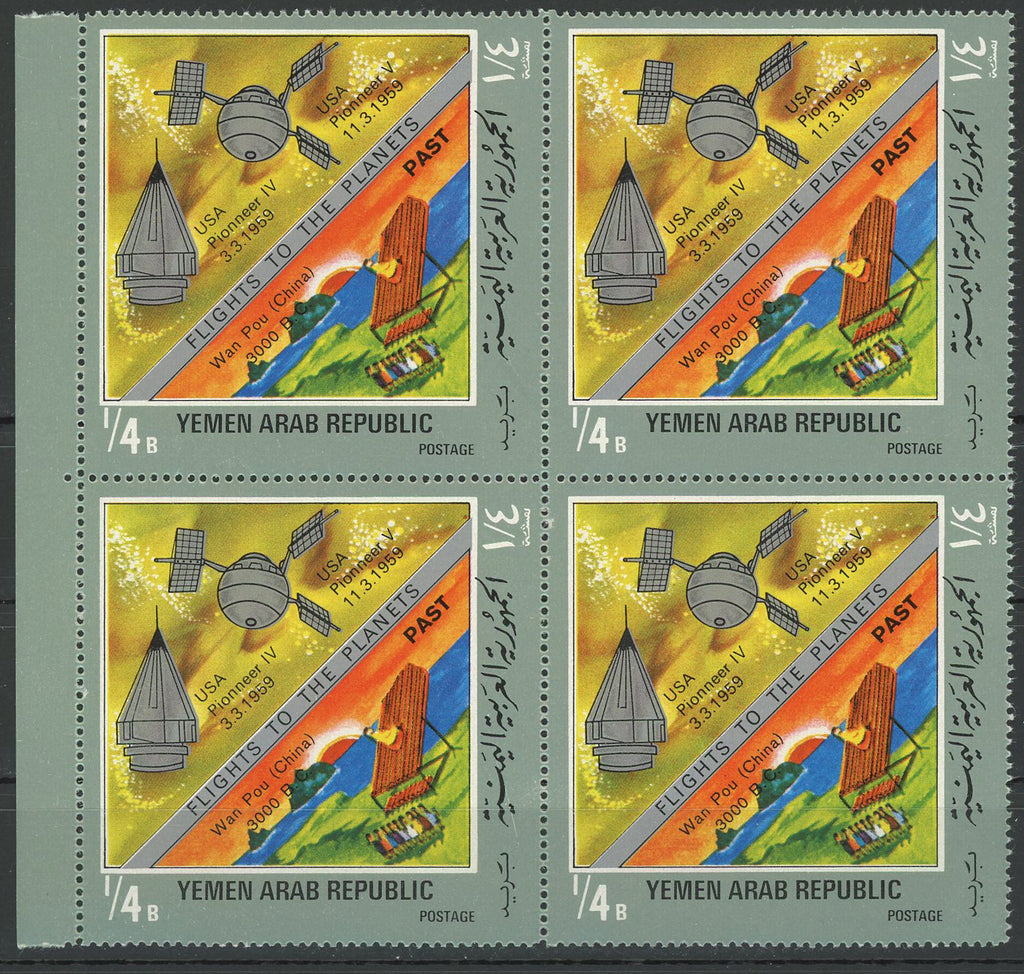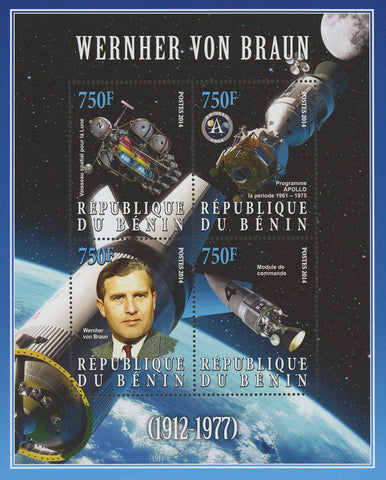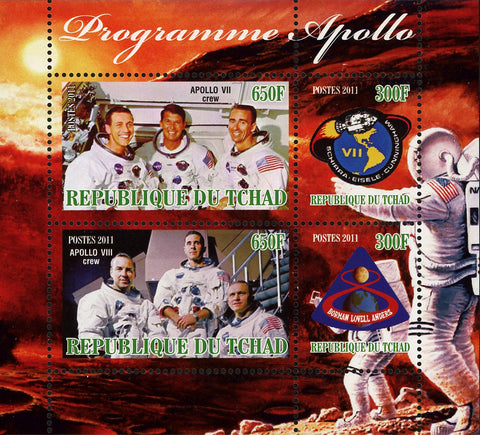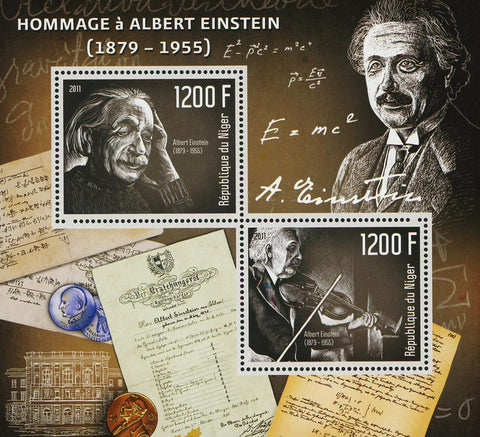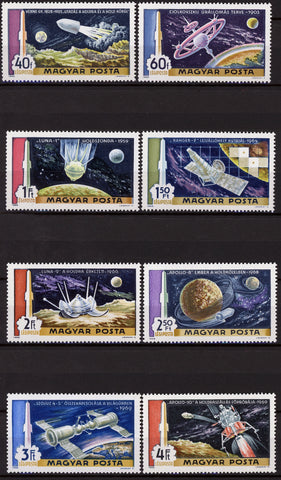Flights to the Planets USA Pioneer IV V Space Block of 4 Stamps MNH
- Product Sku:
- Categories Space & Astronautics
Flights to the Planets USA Pioneer IV V Space Block of 4 Stamps MNH
Pioneer 4 was an American spin-stabilized unmanned spacecraft launched as part of the Pioneer program on a lunar flyby trajectory and into a heliocentric orbit making it the first probe of the United States to escape from the Earth's gravity. It carried a payload similar to Pioneer 3: a lunar radiation environment experiment using a Geiger–Müller tube detector and a lunar photography experiment. It passed within 58,983 km of the Moon's surface. However, Pioneer 4 did not come close enough to trigger its photoelectric sensor. The spacecraft was still in solar orbit as of 1969. It was the only successful lunar probe launched by the U.S. in 12 attempts between 1958–63; only in 1964 would Ranger 7 surpass its success by accomplishing all of its mission objectives.
After the Soviet Luna 1 probe conducted the first successful flyby of the Moon on 3 January 1959, the pressure felt by the US to succeed with a lunar mission was enormous, especially since American mission failures were entirely public while the Soviet failures were kept a secret.
Pioneer 5 (also known as Pioneer P-2, and Able 4, and nicknamed the "Paddle-Wheel Satellite") was a spin-stabilized space probe in the NASA Pioneer program used to investigate interplanetary space between the orbits of Earth and Venus. It was launched on 11 March 1960 from Cape Canaveral Air Force Station Launch Complex 17A at 13:00:00 UTC with an on-orbit dry mass of 43 kg. It was a 0.66 m diameter sphere with 1.4 m span across its four solar panels and achieved a solar orbit of 0.806 × 0.995 AU (121,000,000 by 149,000,000 km).
Data was received until 30 April 1960. Among other accomplishments, the probe confirmed the existence of interplanetary magnetic fields. Pioneer 5 was the most successful probe in the Pioneer/Able series.
The original mission plan was for a launch in November 1959 where Pioneer 5 would conduct a flyby of Venus, but technical issues prevented the launch from occurring until early 1960 by which time the Venus window for the year had closed. Since it was not possible to send the probe to Venus, it would instead merely investigate interplanetary space and an actual mission to the planet would have to wait another three years
Fast & Free Shipping within U.S.A.
We Care for your order, Pack it carefully and ship it within 24 hours.
Satisfaction Guaranteed!
Please explore our store for more stamps, souvenir sheets, post-office collectibles and philately books and pre-philatelic items:
montecinos.philately

